 |
 |
 |
| |
Neurotoxicity Screening of Antiretroviral
Drugs With Human iPSC-Derived Neurons
|
| |
| |
Reported by Jules Levin
CROI 2016 Feb 22-24 Boston
Sandy Hinckley1, Sean Sherman1, Brookie Best2, Jeremiah Momper2, Qing Ma3, Scott Letendre2, Ronald Ellis2, & Anne Bang1 1Sanford Burnham Prebys Medical Discovery Institute, 2University of California San Diego, 3State University of New York at Buffalo
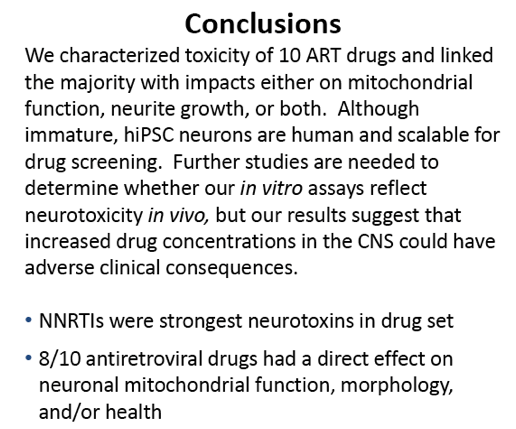
Two ART drugs showed no significant toxicity between both assays performed, Abacavir and Tenofovir
The numbers that are extremes in either directions are bad generally (greater than 2 or less than -2). For example, most results under MMP were negative, but Darunavir was significantly changed in the positive direction. for mitochondria, the degree of mitochondrial toxicity was (EFV>COBI>EVG>RPV>RTV>ATV>DRV>>>>>ABC=TFV>DTG).
the nnRTI, RPV and EFV were toxic to mitochondria within 4 hours which led to neurite retraction and cell death after an additional 3 days treatment. In contrast, the Protease Inhibitors, ATV, DRV and RTV affected mitochondrial function, but did not go on to cause cellular neurotoxicity after 3 days treatment, suggesting less overall degree of toxicity compared to nnRTI.
The heatmap table from the Results Overview is a snapshot of specific outcome measures
you can assess how the degree of drugs’ responses compare to each other and the control compounds
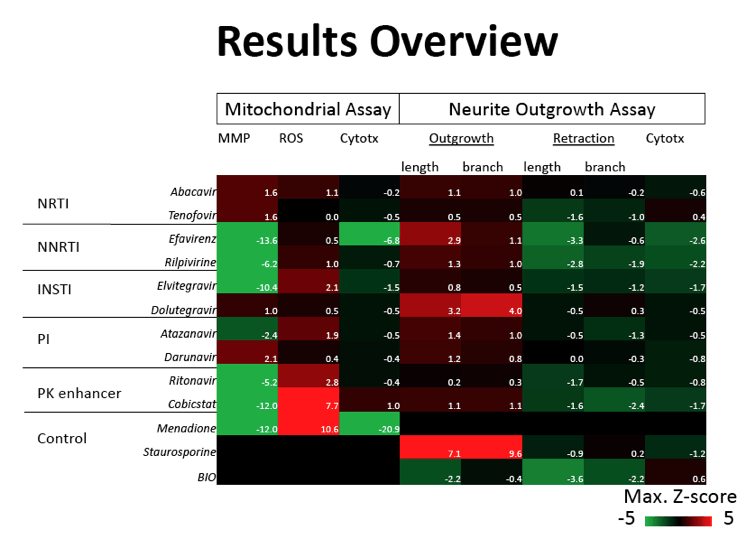
Program ABSTRACT
Background: While antiretroviral therapy (ART) has become increasingly effective and well-tolerated, there remains a patient subset that experience central nervous system (CNS) side effects, and neurocognitive performance may actually improve following change in specific ART agents. Understanding the risk associated with these drugs will allow informed selection of optimal therapy. Using human induced pluripotent stem cell-derived neurons (hiPSC), we screened 10 ART drugs and generated a neurotoxicity profile based on mitochondrial membrane potential, reactive oxygen species, cell health and neurite growth.
Methods: hiPSC cortical neurons (Cellular Dynamics International ) were treated in dose response with ABC,ATV,COBI,DRV,DTG,EFV,EVG,RPV,RTV,TDF. Neurons were assayed for mitochondrial function and neurite growth using image based high content, high throughput screening. Statistical significance was determined as Z-score greater than 2 compared with vehicle control mean across replicate wells.
Results: The majority of tested drugs demonstrated neurotoxicity: 7 caused mitochondrial toxicity and 3 affected neurite growth. Non-nucleoside reverse transcriptase inhibitor, protease inhibitor (PI) and pharmacoenhancer drugs exhibited the highest degree of mitochondrial toxicity. Only EFV was overtly cytotoxic suggesting mitochondrial dysfunction was a primary target, not a side effect of cell death. After 3 days exposure to ART drugs, morphology and cell health was assessed. DTG and EFV resulted in minor but significant neurite growth. RPV was cytotoxic at high dose but caused neurite inhibition at lower doses. Of note, neurite outgrowth or inhibition could contribute to CNS pathology. At high doses, COBI, EVG, RPV and EFV caused neurite inhibition coincident with cytoxicity suggesting the morphological effect was secondary to cell death. While PIs influenced mitochondrial function, no effect was found on morphology. In contrast, COBI, EVG, RPV and EFV presented a distinct profile with mitochondrial dysfunction followed by changes in morphology and/or cytoxicity.
Conclusions: We characterized toxicity of 10 ART drugs and linked the majority with impacts either on mitochondrial function, neurite growth, or both. Although immature, hiPSC neurons are human and scalable for drug screening. Further studies are needed to determine whether our in vitro assays reflect neurotoxicity in vivo, but our results suggest that increased drug concentrations in the CNS could have adverse clinical consequences.
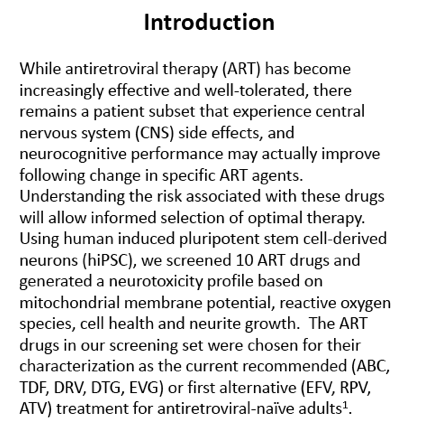
1 Panel on Antiretroviral Guidelines for Adults and Adolescents. Guidelines for the use of antiretroviral agents in HIV-1-infected adults and adolescents. Department of Health and Human Services. Available at http://www.aidsinfo.nih.gov/ContentFiles/AdultandAdolescentGL.pdf. Accessed February 21, 2016. Page 58, Table F3
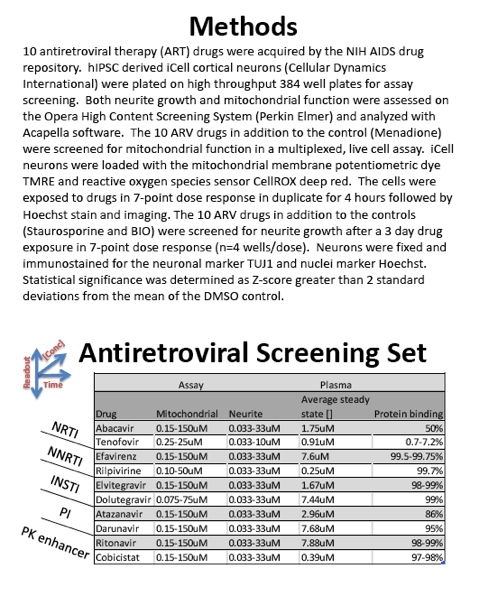
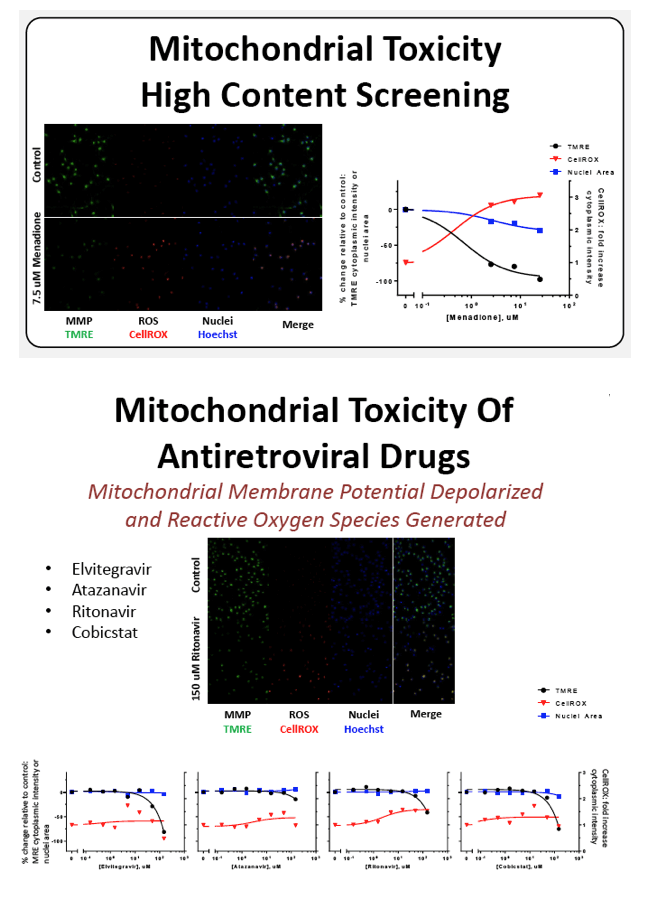
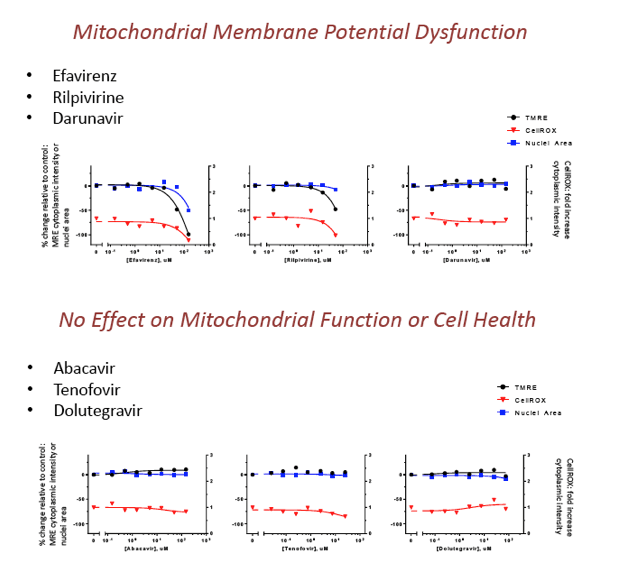
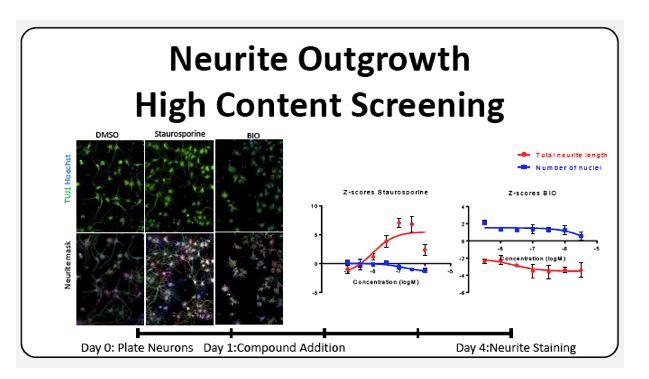


|
| |
|
 |
 |
|
|